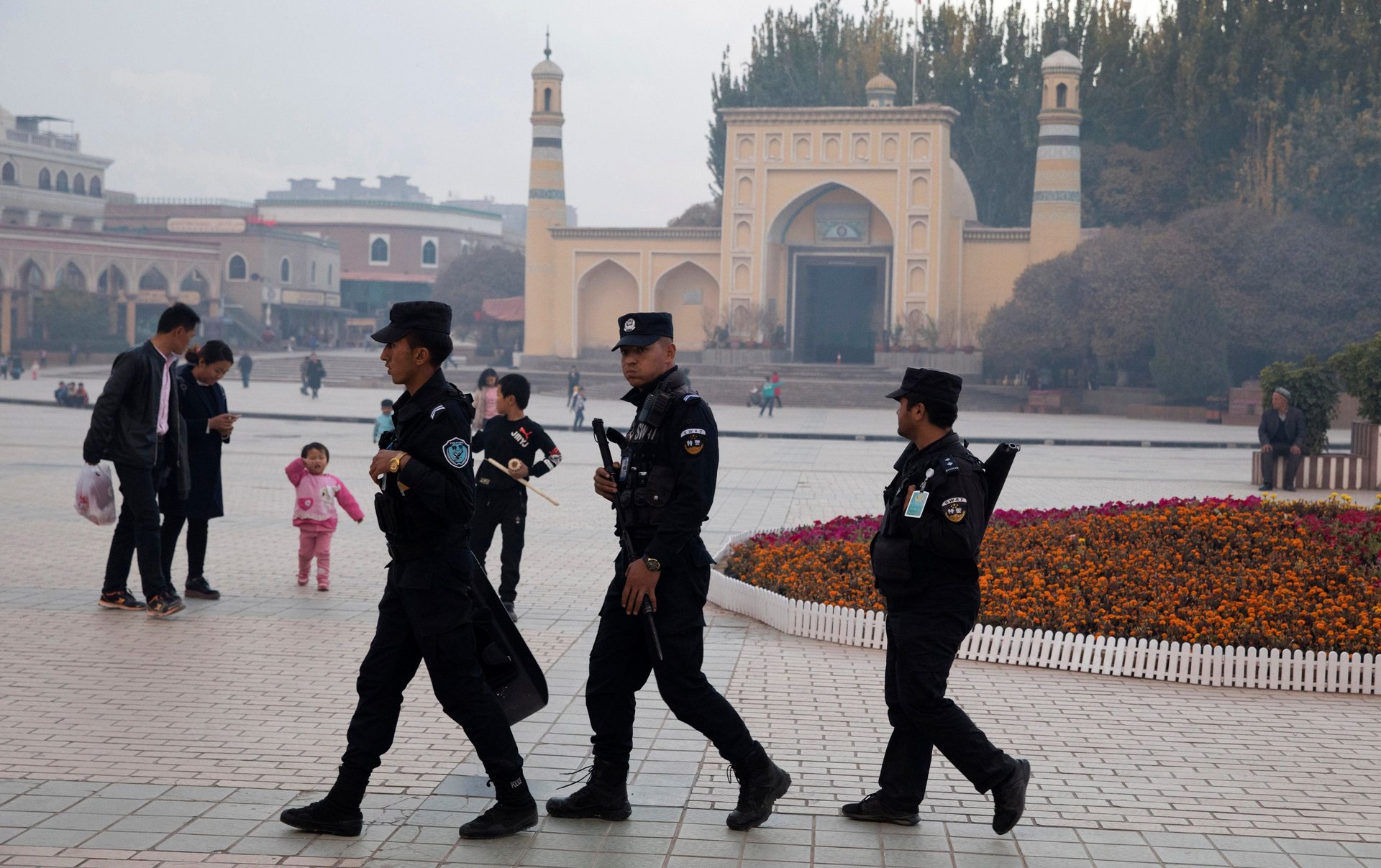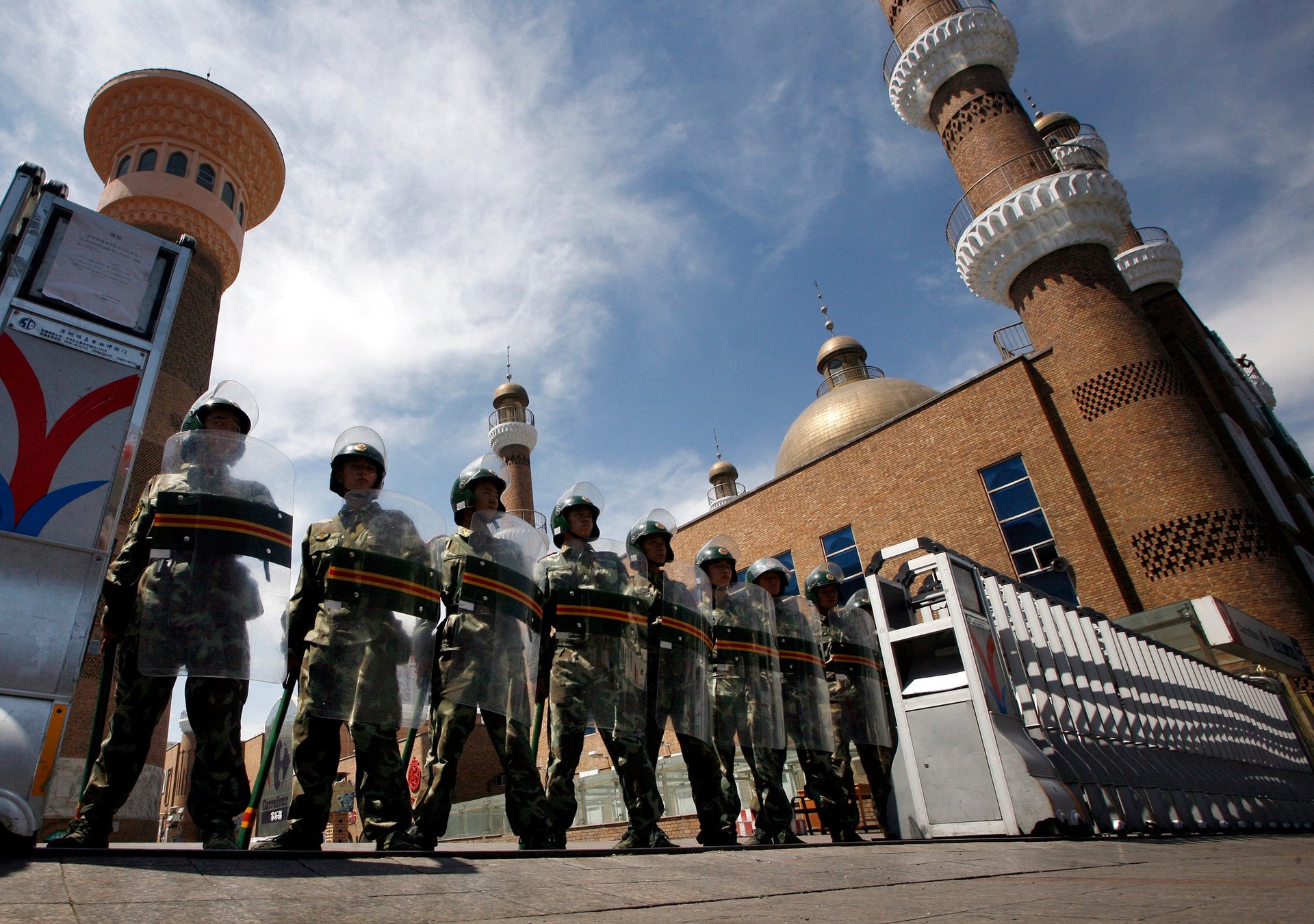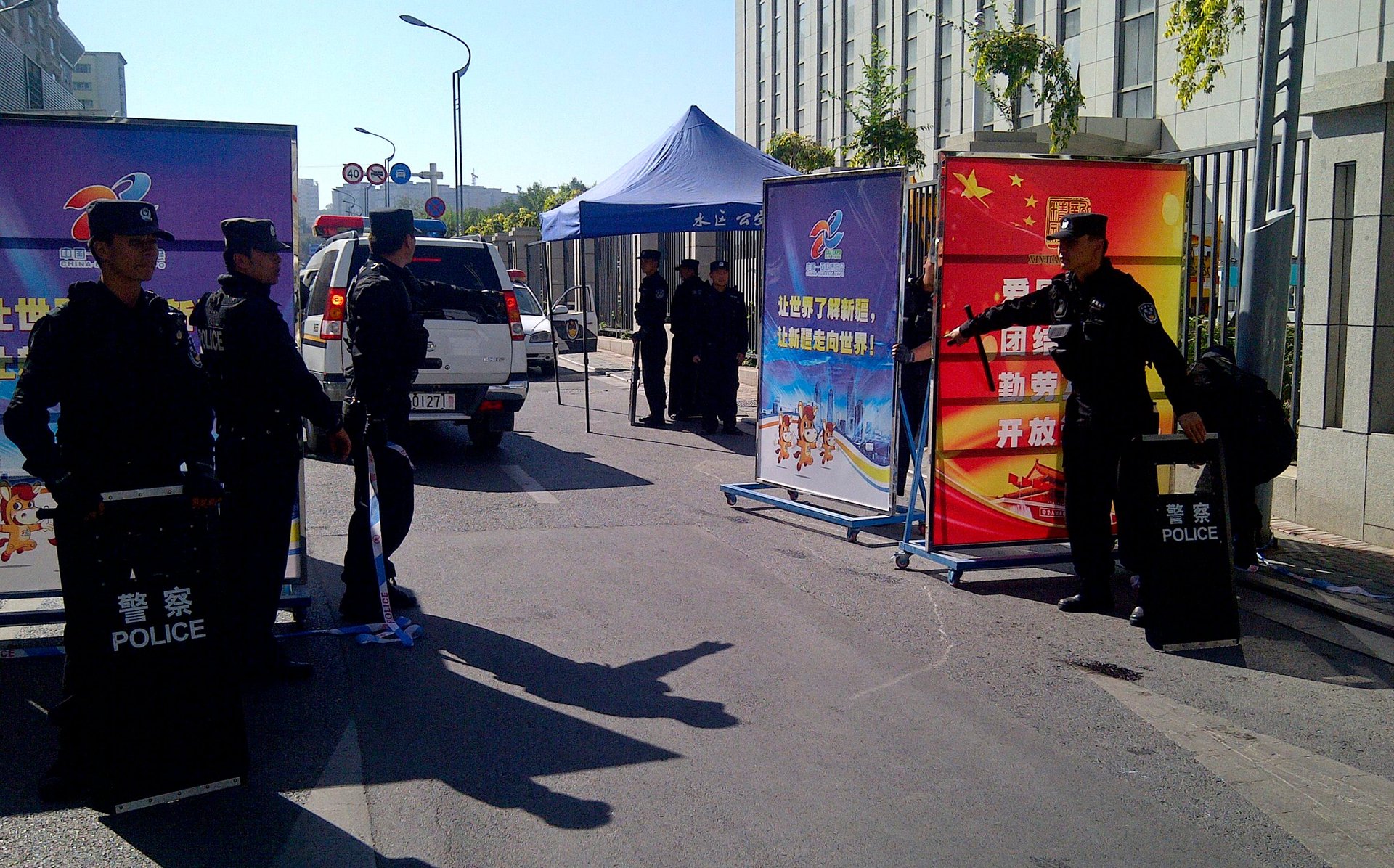Securitization and mass detentions in Xinjiang: How Uyghurs became quarantined from the outside world
The Xinjiang Uyghur Autonomous Region in western China is home to some 12 million indigenous Turkic-speaking Muslims, primarily Uyghurs but also smaller numbers of Kazakhs and others. It is now one of the most heavily policed areas in the world, with inhabitants detained in extraordinary numbers.


The Xinjiang Uyghur Autonomous Region in western China is home to some 12 million indigenous Turkic-speaking Muslims, primarily Uyghurs but also smaller numbers of Kazakhs and others. It is now one of the most heavily policed areas in the world, with inhabitants detained in extraordinary numbers.
In the past year, foreign media outlets have relentlessly reported on the mass incarceration and cultural suppression of the Uyghurs, forcing Beijing to acknowledge at a recent public forum the existence of what it calls “re-education centers” for the first time.
China has sought to justify its extreme policies in Xinjiang as a fight against Islamic radicalization and extremism as well as Uyghur “separatism.” The 9/11 attacks on the United States were a watershed moment for these policies—after the attacks, Beijing started to explain incidences of unrest or random violence in Xinjiang, which previously were termed “separatism,” as premeditated terrorist attacks spurred by religious extremism.
Criminalizing Islam
Since the 1980s, there has been a rise in Islamic piety in Xinjiang, amid a broader religious revival in Central Asia. It primarily took the form of a steady rise in piety: building new community mosques, growing numbers of people adopting daily prayer, fasting and forms of Islamic dress, and many debates about how to be a good Muslim.
China’s increasingly severe policies toward Islam after 2001 produced a downward spiral of repression, which provoked violent incidents—including deadly riots in 2009 in Urumqi between Uyghurs and Han Chinese—which then provoked further repression. By 2014 this cycle of violence had escalated to the point that some Uyghur-initiated acts of violence began looking increasingly like planned terrorist attacks. That year saw the killing of 33 people with knives by a band of masked Uyghurs in a train station in Kunming, and the bombing of a train station in Urumqi that killed 43. In response, the Chinese government declared a “People’s War on Terror.”

In my view, it is China’s concerns about this broad-based Islamic revival that have motivated the current heavy securitization of the region. Its so-called anti-terror policies are not targeted at small groups potentially vulnerable to extremism, but at all forms of religious expression. The “People’s War on Terror” is directly linked to president Xi Jinping’s wider moves to establish his personal authority, and to demonstrate absolute control over this key strategic region, in order to ensure the success of the flagship Belt and Road Initiative, of which Xinjiang is an important part.
New counter-terrorism legislation introduced in 2015 defined “terrorism” in a way that criminalized virtually any Uyghur expression of dissent or religiosity as signs of religious extremism and terrorism. It introduced extensive powers of surveillance and censorship, especially regarding internet and social media communications. It curtailed Uyghur mobility; Uyghurs were required to apply for a “convenience card” (paywall) if they wish to leave their hometown. It criminalized wearing veils, growing beards, and other everyday religious practices including daily prayer, fasting, and halal eating practices.
In 2016 Chen Quanguo—formerly party secretary in Tibet—was appointed as party secretary in Xinjiang. Under Chen, Uyghurs have been effectively quarantined from the outside world—people have had their passports confiscated, and by 2017, even receiving a phone call from a family member living outside China has also become an offense punishable by detention in a re-education camp. Chen introduced “grid-style” social management involving extraordinarily high levels of policing, and many new recruits. Thousands of new “convenience police stations” were rolled out on Xinjiang’s streets to play a critical role in the surveillance.
There are now numerous checkpoints on the roads, at train, and bus stations and inside towns and cities, complete with metal detectors and facial recognition or iris-scan machines. We know from independent observers that only Uyghurs are required to pass through these scanners; Han Chinese citizens pass through a separate gate. In some areas cars must be equipped with GPS trackers. Kitchen knives are etched with serial numbers that are linked to the ID number of the purchaser. Human Rights Watch has reported on the development of a biological database to assist in tracking Uyghurs, and on compulsory collecting of DNA samples.

There is also plenty of low-tech surveillance. Local people are mobilized in counter-terrorism exercises, which involve marching around the streets with big sticks. There are rewards for information: 5 million yuan ($733,000) for information on actual planned terrorist attacks, 2000 yuan for reporting face coverings or beards. Over 10,000 teams of visiting officials descended on Uyghur rural households in 2017. This was part of what was framed as the “Becoming Family” policy. It involved home stays with Uyghur families by Han “relatives” who were required to report on “extremist” behavior by their hosts, such as not drinking alcohol, fasting during Ramadan, and possessing “undesirable” items like Qurans.
As if they were not sufficiently exhausted by all these security measures, Uyghurs are regularly mobilised to participate in mass activities: celebrations of Chinese culture, singing revolutionary songs, and dancing to counter extremism.
“Without the Communist Party, there is no New China”
The consequence of non-compliance in these activities is incarceration in the network of detention camps or “re-education centers” that have sprung up around the region. While estimates of the numbers of people detained is speculative, the available evidence suggests that more than 10% of Xinjiang’s Muslim minority population—Uyghur, Kazakhs, and others—a total of over 1 million people, have been interned in political re-education facilities.
China has only recently acknowledged the existence of these camps under heavy pressure from Western media. In response to questions raised by a United Nations committee in August, it issued rebuttals concerning the scope and aims of the camps. However, there is mounting, incontrovertible evidence concerning the numbers of people being detained in the camps, and the methods of re-education being used there.
Adrian Zenz, a researcher at the European School of Culture and Theology in Germany, has unearthed a substantial body of government sources, showing a huge spike in government procurement and construction bids in spring 2017 valued at around 680 million yuan. They indicate both the construction of new facilities as well as upgrades and enlargements of existing re-education facilities, whose compound sizes range between 10,000 and 82,000 square meters. Many bids mandate the installation of comprehensive security features including barbed wire fences, reinforced security doors and windows, surveillance systems, watchtowers, and guardrooms.
From interviews with the few people who have been released from these camps, and people employed (paywall) as instructors in the camps, we know that detainees wake before dawn, sing the Chinese national anthem, and raise the Chinese flag. Instructors lecture them about the dangers of Islam, and internees are tested and punished if they fail to provide the correct answers.
Forced repetition and self-criticism are central to the re-education program. Before meals, inmates chant, “Thank the Party! Thank the Motherland! Thank President Xi,” and sing revolutionary songs such as “Without the Communist Party, there is no New China.” They are required to present self-criticism, and submit to criticism by their fellows. They must apologize repeatedly for wearing long clothes in Muslim style, praying, teaching the Quran to their children. Those who refuse to do so are punished with solitary confinement, beatings, and food deprivation.
Testimonies hint at the psychological trauma inflicted on detainees. Reports also attest to the trauma suffered by the wider Uyghur population, both within Xinjiang and in the diaspora. We know that Uyghurs within Xinjiang are struggling to maintain daily life with over 10% of the workforce in detention. Many children have been sent to state orphanages because both their parents have been detained. Uyghurs living outside Xinjiang are suffering from crippling anxiety and guilt: They risk detention for their relatives if they try to contact them, and they fear worse consequences for their detained relatives if they speak out.
“Weeds hidden among the crops”
Since the imprisonment of moderate Uyghur intellectual Ilham Tohti in 2014 on charges of separatism, it’s been clear that the scope of Beijing’s campaign in Xinjiang now goes well beyond the religious sphere. Meanwhile, the list of prominent Uyghur intellectuals, artists, and athletes who we know have been recently detained is growing, and is only the tip of the iceberg:
- Professional football player Erfan Hezim detained in 2017
- Prominent religious scholar Muhammad Salih Hajim, 82, died in custody, January 2018
- Xinjiang University president Tashpolat Teyip detained in 2017, accused as a “two-faced” official, insufficiently loyal to the state
- Xinjiang University professor Rahile Dawut detained in 2017, possibly in connection with her ethnographic research on Uyghur religious culture
- Uyghur writer and Xinjiang Normal University professor Abduqadir Jalaleddin, detained in January 2018
- Elenur Eqilahun, detained in 2017, possibly for receiving calls from her daughter who is studying abroad
- Pop star Ablajan Ayup, detained in February 2018, possibly for singing about Uyghur language education
- Halmurat Ghopur, vice provost of Xinjiang Medical Institute, detained in 2017 for exhibiting “nationalistic tendencies”
Current policies seek to quarantine Uyghurs from any foreign contacts by targeting individuals who have promoted Uyghur language or culture, as well as people who resist, or are insufficiently enthusiastic about, the campaign. It suggests that the “anti-terror” campaign is being used as part of a wider set of policies—including the so-called bilingual-education policy which has banned the use of Uyghur language in schools and higher education—which are designed to break down ethnic identity and affiliation, and absorb minority nationalities into the wider Chinese nation (zhonghua minzu).
It also suggests that Turkic-speaking Muslim minority peoples are now collectively regarded as a threat to China’s national security. As one official from Kashgar reportedly said at a public meeting, “You can’t uproot all the weeds hidden among the crops in the field one by one—you need to spray chemicals to kill them all; re-educating these people is like spraying chemicals on the crops … that is why it is a general re-education, not limited to a few people.”